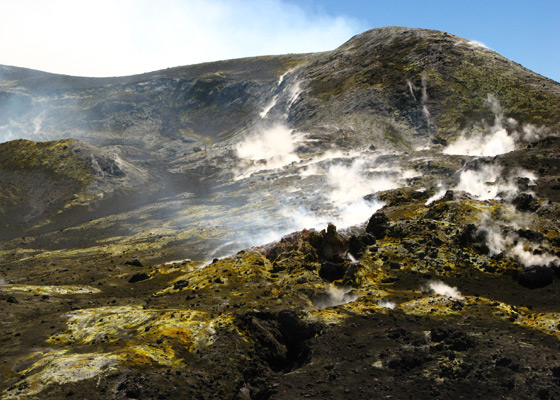Iconic Mount Etna gains World Heritage status
Phnom Penh, Cambodia, 21 June 2013 (IUCN) - One of the world’s most active volcanoes, Italy’s Mount Etna has been named a World Heritage Site at the World Heritage Committee meeting currently taking place in Phnom Penh, Cambodia, following IUCN’s recommendation.

Photo: IUCN Bastian Bertzky
Located on the east coast of Sicily, Mount Etna is renowned for its exceptional level of volcanic activity. There have been 13 eruptions since the beginning of February this year. It has been documented for at least 2,700 years. Today, it is one of the best studied and monitored volcanoes in the world, which continues to influence volcanology, geophysics and other earth science disciplines.
“Researchers have been fascinated by Mount Etna for thousands of years,” says Tim Badman, Director of IUCN World Heritage Programme. “Its scientific, cultural and educational values are of global importance. We hope that this prestigious status brings with it enhanced protection of the site, especially in the face of growing pressures from tourism.”
Mount Etna, 3,329 meters high, is an outstanding example of ongoing geological processes and volcanic landforms. It is characterized by almost continuous eruptive activity from its summit craters and frequent lava flow eruptions from craters and fissures on its flanks. The diverse and accessible volcanic features such as summit craters, cinder cones, lava flows, lava caves and the Valle de Bove depression situated on its east side, have made Mount Etna a prime destination for research and education.
IUCN is the advisory body to UNESCO’s World Heritage Committee on nature. Working closely with the World Commission on Protected Areas (WCPA), IUCN’s World Heritage Programme evaluates sites nominated to the World Heritage List, monitors the conservation state of listed sites, promotes the Convention as a leading global conservation tool, and provides support, advice and training to site managers, governments, scientists and local communities.
The following natural sites were recommended by IUCN for inscription on the World Heritage List and adopted today, alongside Mount Etna: The Namib Sand Sea in Namibia, Xinjiang Tianshan in China, the extension of Mount Kenya National Park to include the Lewa Wildlife Conservancy and Ngare Ngare Forest Reserve, the Tajik National Park of Tajikistan. El Pinacate and Grando Desierto de Altar Biosphere Reserve in Mexico.



